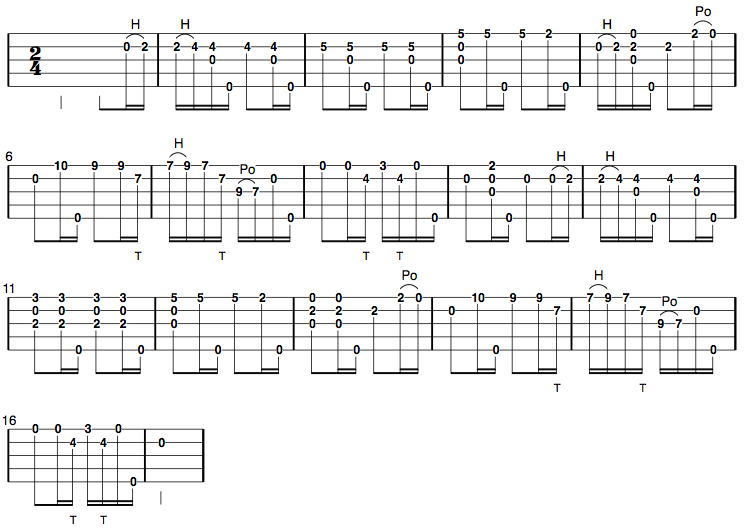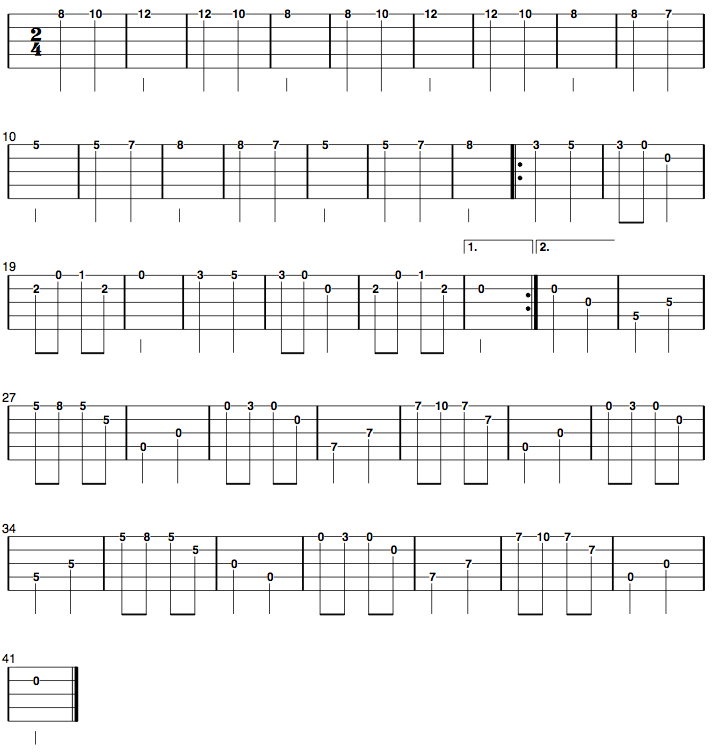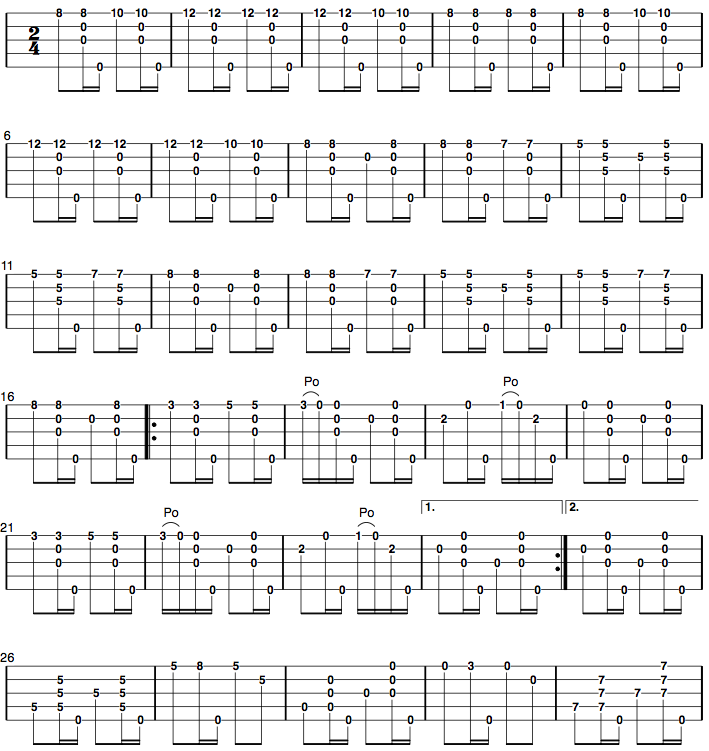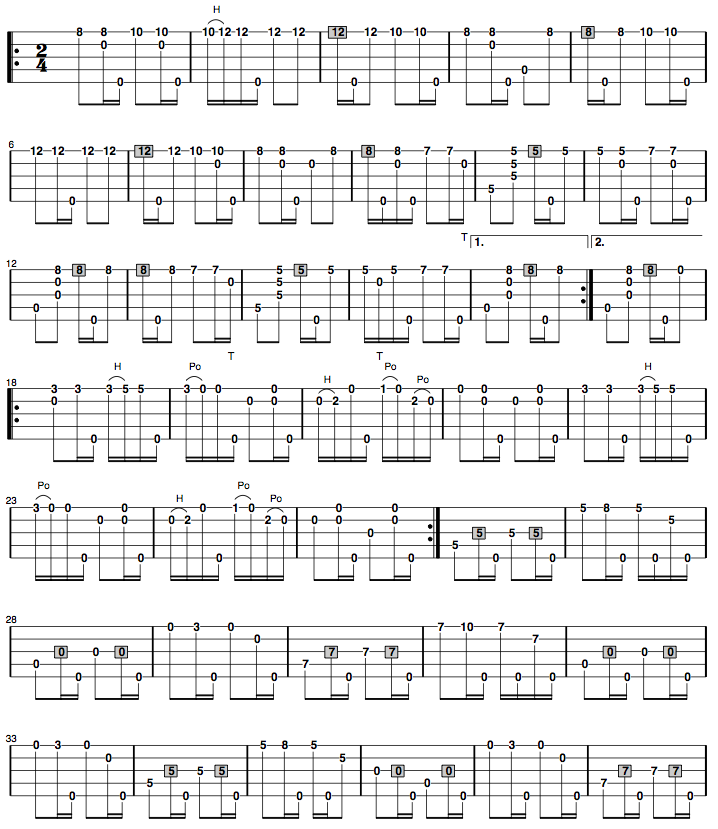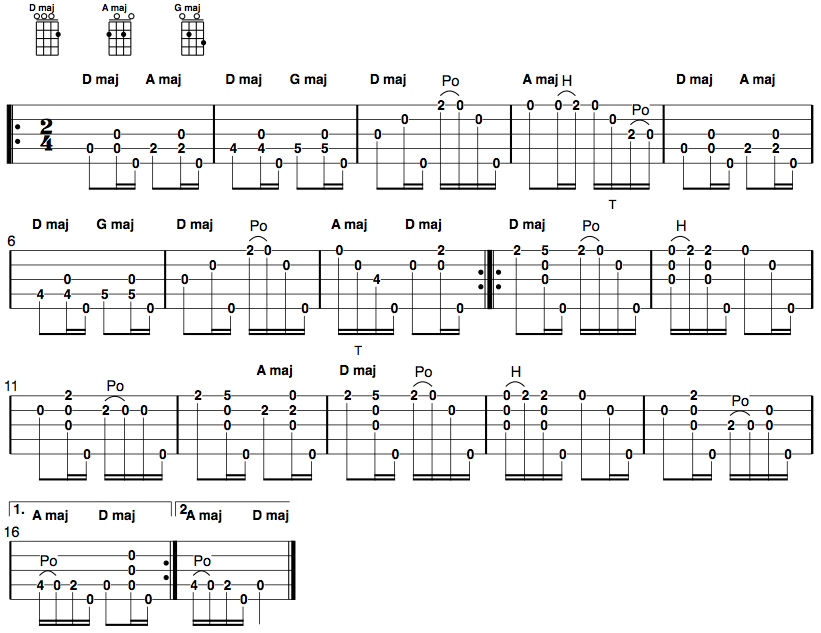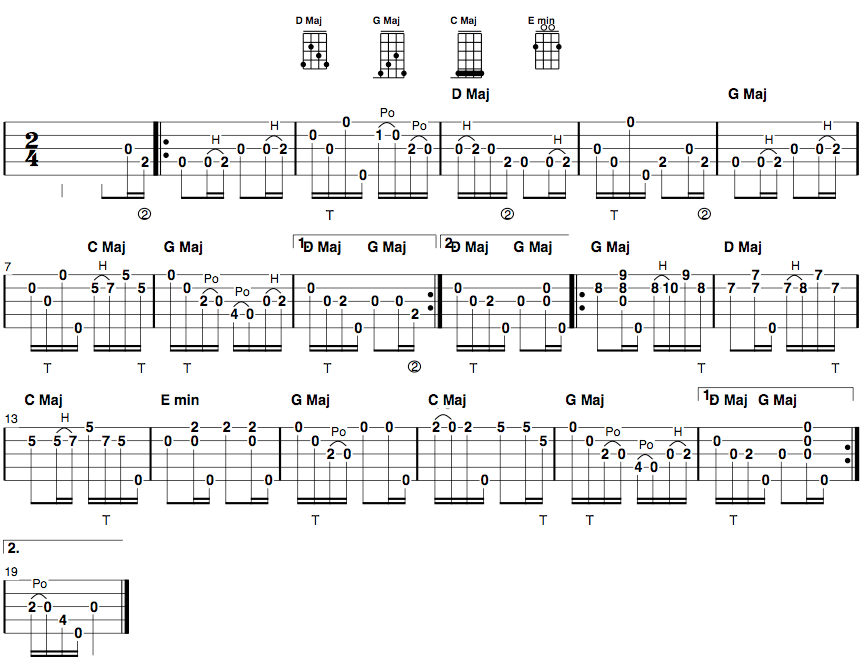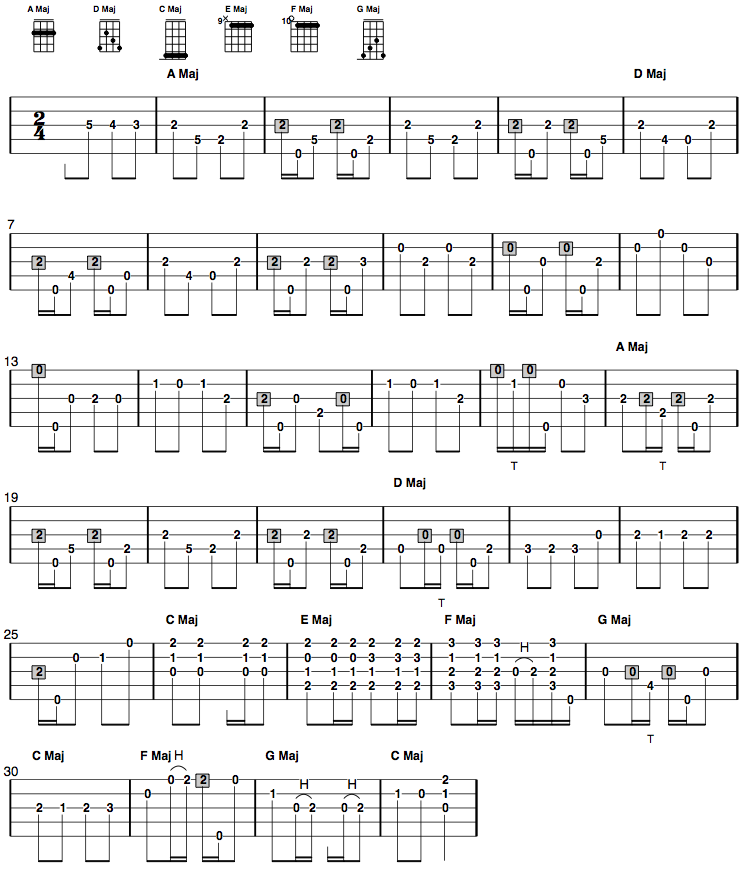Legend has it that Joe Coleman, after whom this tune is named, was accused and convicted of stabbing his wife to death, though he claimed innocence till the end. En route to his execution, it was said the he played the tune we now know as “Coleman’s March” on his fiddle. According to legend, he then offered said fiddle to anyone who could play the tune as well as he (source: “The Fiddler’s Companion”).
For me, the melody of this tune alone is enough to get me all choked up. Throw in this anecdote and, well, you might as well stick a fork in me…
Anyhow, this is one gorgeous tune. And you don’t really need to do much more than stick to the melody to make it sound great. In fact, I find that the more I restrain myself from superfluous fanciness, the better it tends to sound.
You’ll note in the video that I play an “up the neck” variation on the A part, which I’ve also included in the tab below.
Coleman’s March
aDADE tuning, Brainjo level 3


